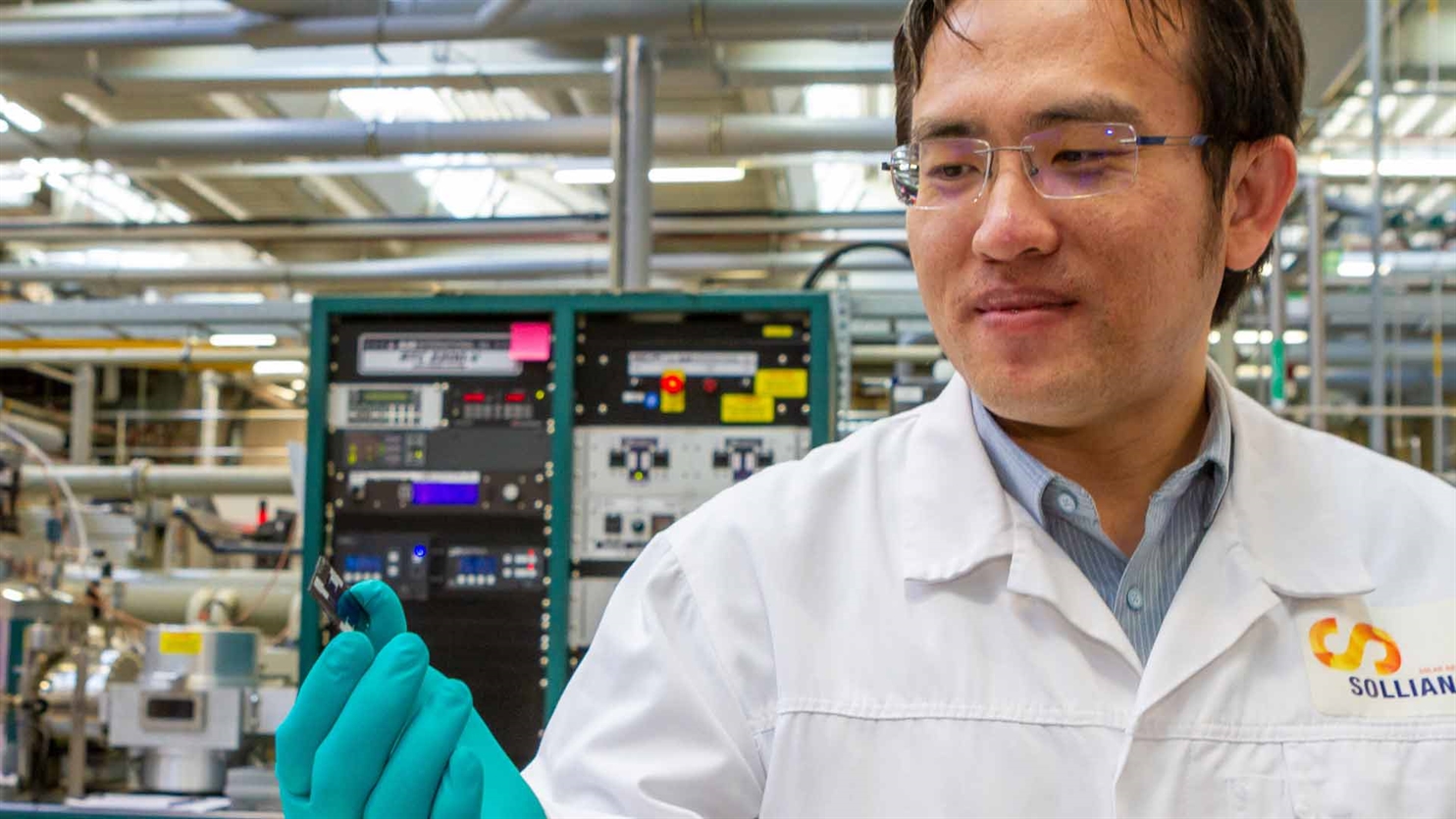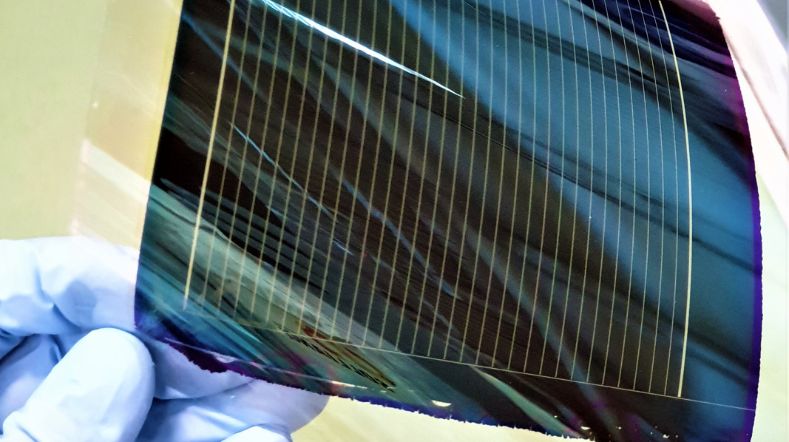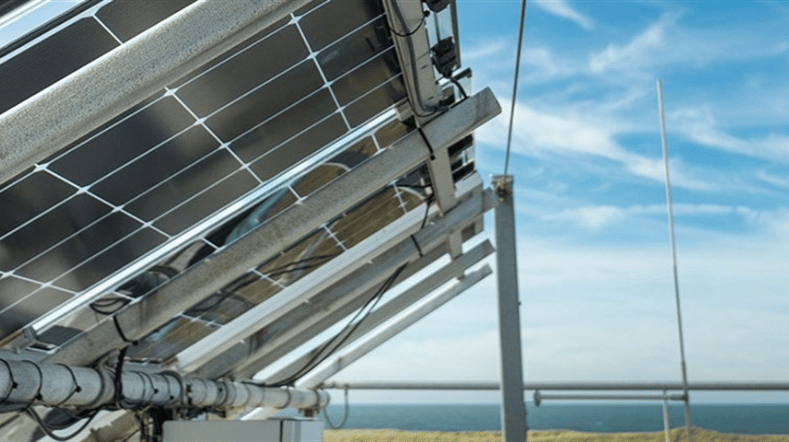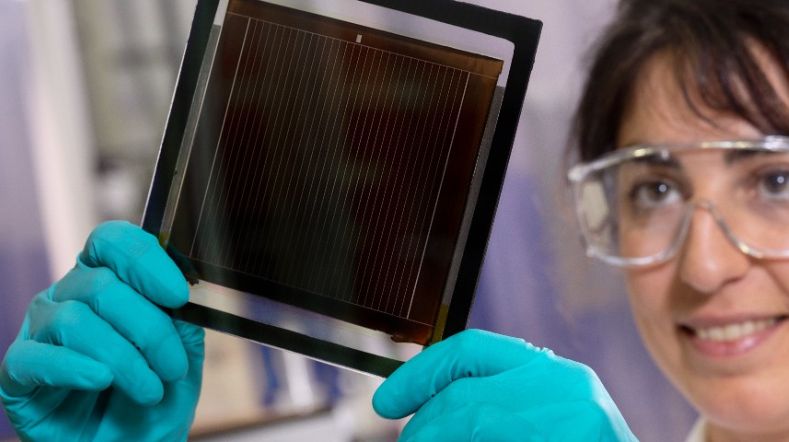
Solar energy: limits to yield extended further
Solar energy is developing at lightning speed. The increase in efficiency is, amongst others, causing a cost reduction. TNO researchers, Eindhoven University of Technology and Delft University of Technology broke two world records on next generation so-called four terminal tandem devices (stack of two solar cells / sub-cells resulting in a better utilization of the energy in the solar spectrum). This has been done last Autumn by taking the power density of solar cells to a very high level for tandem applications. And there is no end in sight for such improvements.
Accelerating the energy transition
‘A major step in the energy transition. The higher the efficiency, the more solar power you get at the same area. Thanks to the breakthroughs up to 50% more. What’s more, we’ve already been successful in incorporating photovoltaic elements in a visually attractive way into existing surfaces, such as façades of buildings, roads, noise barriers, and cars. In this way we are accelerating the pace of the energy transition,’ says Gianluca Coletti, TNO expert in the field of solar energy.
The new boundaries that tandem technology open
‘We’re constantly battling to push back the boundaries of commercially available modules. We’re achieving things today that were considered impossible years ago and at such competitive cost. It’s time for a paradigm change now and step into tandem technology, it is very fulfilling to make theoretical limits of conventional module a new practical reality. The next step is for industry to turn this into a profitable product and process it into solar modules on a large scale.’
Stacking solar cells to make a tandem
The secret to the results achieved is to stack different types of photovoltaic cells to make what is called a tandem solar cell. Around 90% of all solar panels worldwide are now made from crystalline silicon. The performance of this material has steadily improved in the past several years while the costs have declined enormously. Today, a new material is emerging for solar cells, called perovskite.
In the Solliance partnership, experts from TNO and Eindhoven University of Technology, have developed ultra-transparent and high performing perovskite top cells. These were combined with bottom cells developed by TNO with industry partners and by TU Delft. This provided two consecutive record yields of 29.2 and 29.7%.

Smart combinations of materials
‘We expect to exceed the 30% limit in the foreseeable future by further perfecting the tandem cells, and we think yields of up to 35% through smart combinations of materials and processes will be achievable. Industry is eager to team up with us to use these results in order to incorporate the technology we have developed into their products. That’s why we do this work. A world record is wonderful, but the aim for these solar cells is to generate energy on a large scale in the near future, on the roofs of commercial buildings and in façades, road surfaces, solar plants or whatever else is available.’
Preventing excessive use of area
Achieving increasingly high efficiency at stable or even lower costs is of great importance in countries like the Netherlands that are densely populated and built-up, and where surface area is scarce and costly. The current power density of conventional solar modules is roughly 200 watts per square metre under full sun. Through the use of tandem technology, that can be boosted to over 300 watts per square metre, which is an increase of 50%. Furthermore, such high-power density makes it more convenient to integrate solar cells into construction elements, so that a great deal more existing surface area can efficiently be used.
Upscaling is a continuous process
‘Boosting the power per square metre also reduces the cost price of the overall PV installation, so there’s a twofold effect,’ says Gianluca. ‘We’re working continuously on a higher solar module performance and on an increasing the module size for industrial scalability. In the lab, we’ve achieved the efficiency of nearly 30% on a surface area of a few square millimetres but these results are obtained with scalable processes. This size has to be increased to hundreds of square centimetres while maintaining the same performance. It will then be of interest to industry. For us, that upscaling is a continuous development.’
Ideal combinations
Crystalline silicon as the current dominant material for photovoltaic modules, new materials as perovskites, module architectures as tandems and bifacial functioning: the experts at TNO are constantly seeking the ideal combinations for an optimum result. Apart from stacking silicon and thin-film perovskite, they’re also conducting research on tandems based wholly on thin film technologies, using the combinations perovskite with copper indium gallium selenide (CIGS) and, on the long term, perovskite with perovskite. This material is relatively cheap and can be applied to a substrate in ultra-thin, ultra-light and flexible layers.
Testing reliability and circularity
All combinations of solar cells and modules are extensively tested under most severe outdoor conditions. To test their reliability, they are placed in special climate chambers and exposed to alternating high and low temperatures with different levels of humidity and illumination, among other tests. Because this is a new technology, completely new stress tests are required and need to be developed. The experts are also working on alternative protective coatings to improve circularity. Reliability, stability, and service life must be guaranteed for at least 25 years.
These results have been made possible thanks to the fruitful collaboration between imec, TU/e, TU Delft and TNO.
Read more about tandem technology.
Get inspired
Dutch consortium develops manufacturing technology for perovskite solar cells


Dutch-German consortium develops simplified tandem solar modules for European market


Tandem technology


Perovskite solar cells


